Have you ever wondered how animals talk to each other without saying a single word? From the whisper of whales to the dance of bees, the animal kingdom is filled with unique languages that don’t involve human speech — but are just as powerful, and often more effective.
Let’s take a journey through the hidden
world of animal communication.
🐘 1. Elephant Rumbles: Conversations Across Kilometers
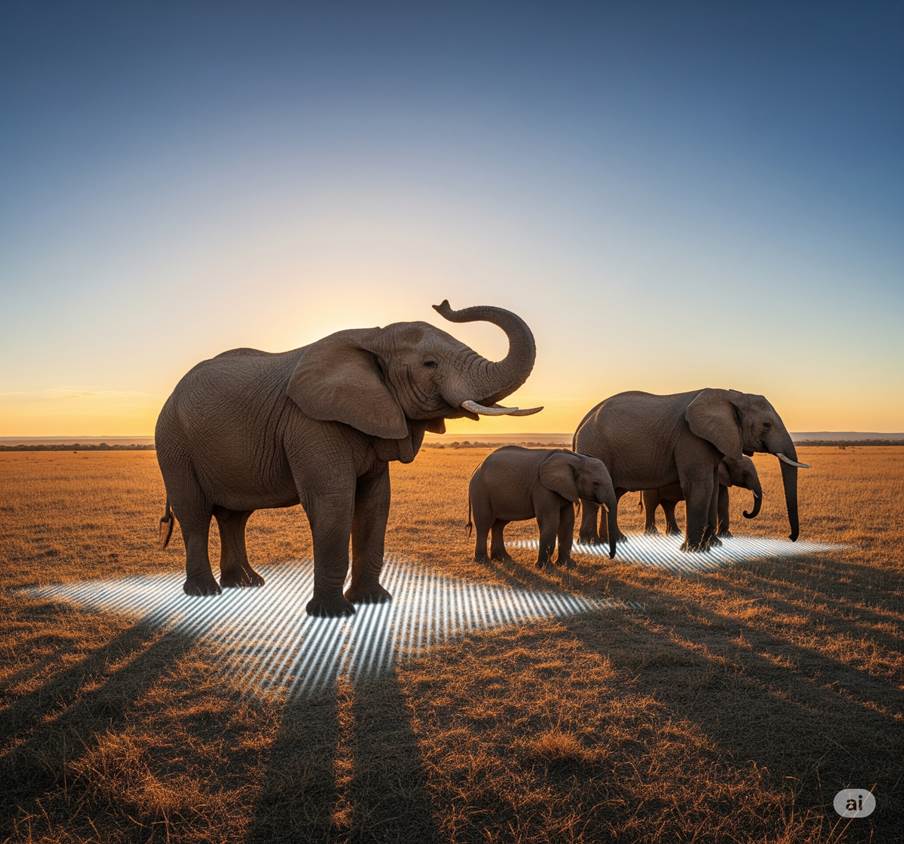
Elephants are some of the most emotionally intelligent creatures on Earth. But their real magic lies in infrasound communication. They produce low-frequency rumbles that can travel several kilometers through the ground, allowing herds to stay
connected even when far apart.
These rumbles can express everything from excitement and warning to sorrow and reunion — a true testament to their emotional depth.
🐝 2. Bee Dances: Maps Made of Moves
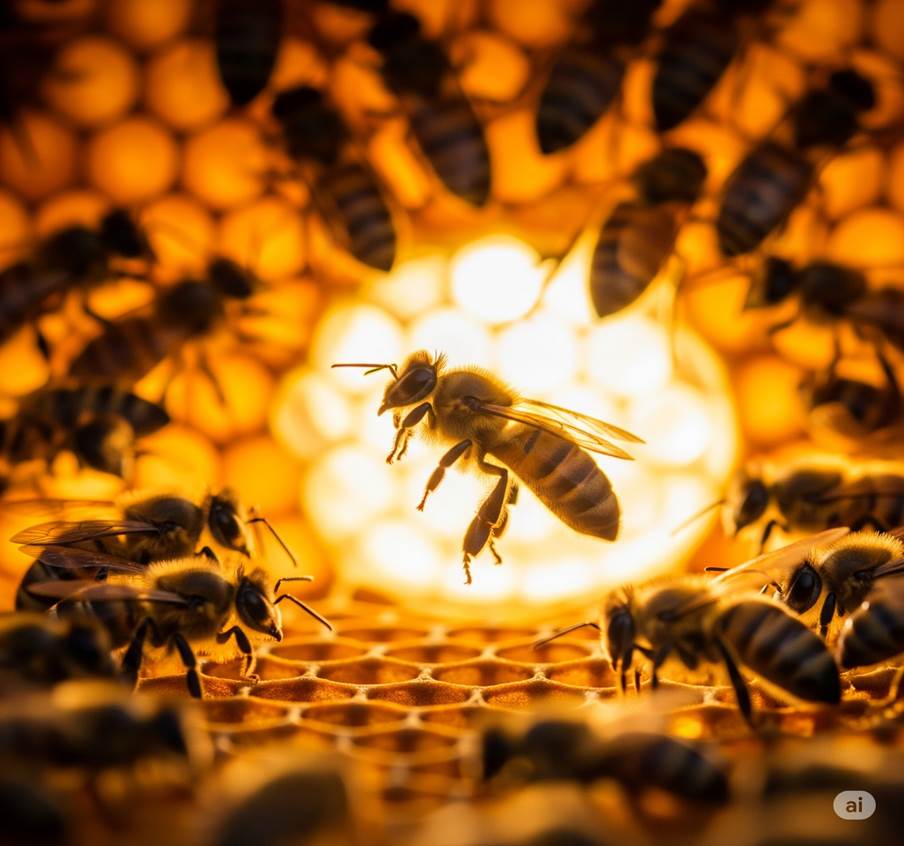
Bees don’t use GPS — they use dance. When a worker bee finds a good flower patch, it returns to the hive and performs the “waggle dance.” The direction and duration of the dance tell other bees where to find the food source — including direction, distance, and even
the quality of nectar.
This sophisticated signaling system keeps the whole colony buzzing with purpose.
🐋 3. Whale Songs: Melodies of the Deep
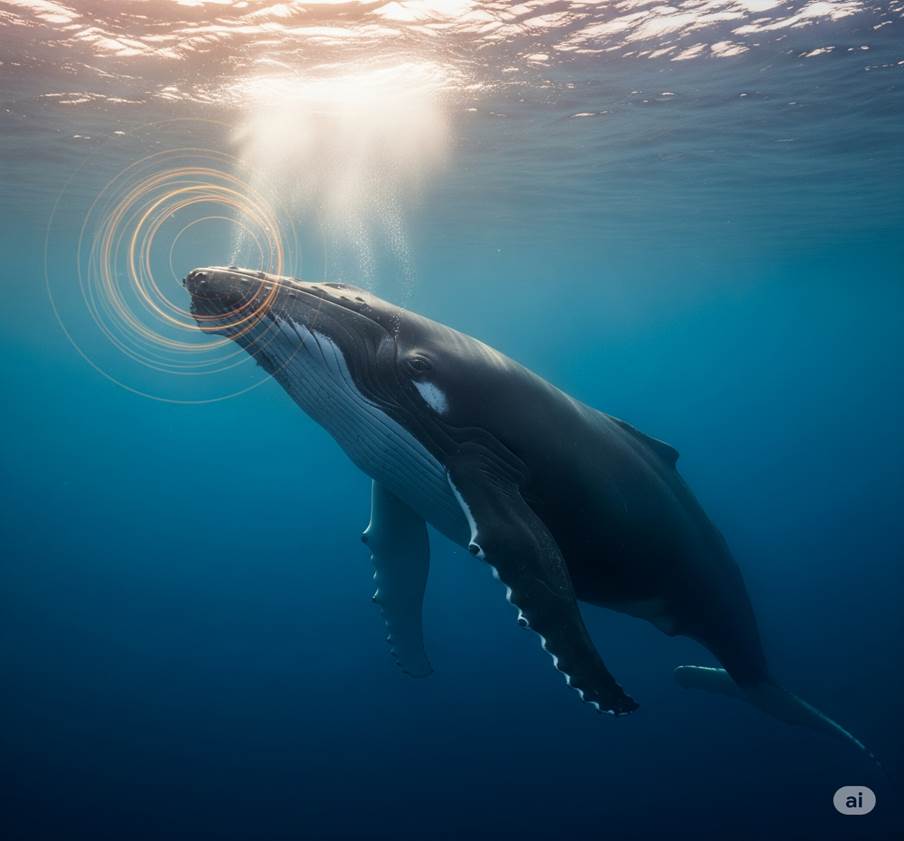
Humpback whales are known for their hauntingly beautiful songs. These vocalizations aren’t just soothing ocean sounds — they are complex sequences used for mating calls, navigation, and even social bonding.
Each pod has its own “song dialect,” and these can change over time, evolving like a kind of underwater culture.
🦜 4. Parrot Mimicry: More Than Just Echoes
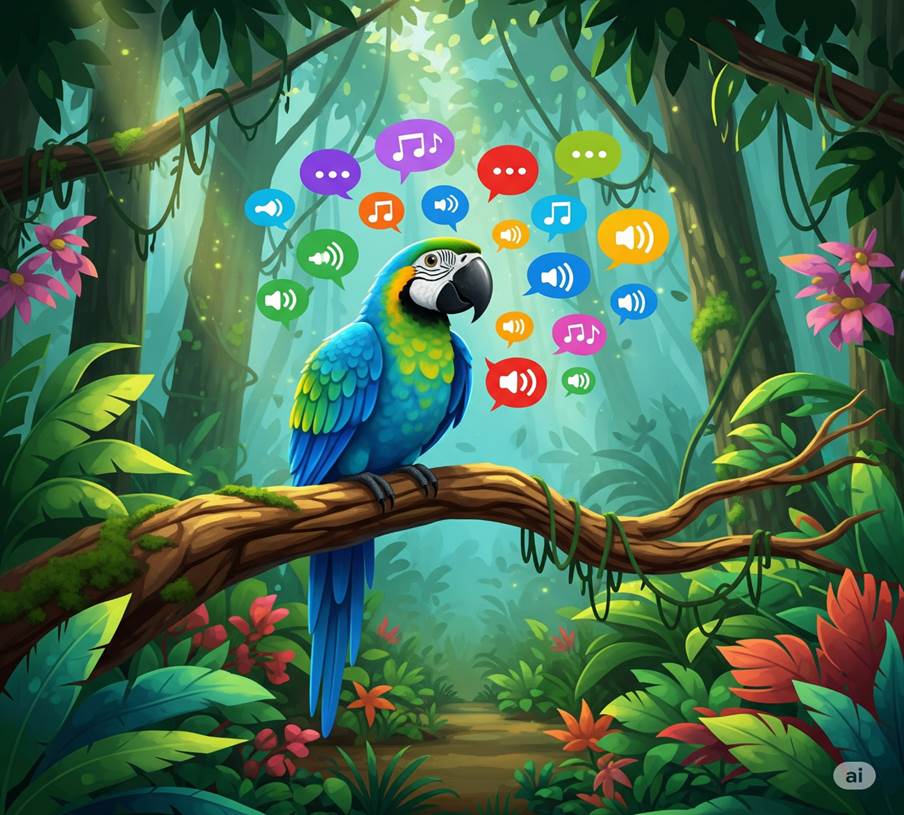
Parrots are famous for mimicking human voices — but it’s not just a party trick. In the wild, they use a wide range of sounds to communicate with their flock. Some species even give names (specific call signatures) to their babies, which they use for identification
throughout life.
This vocal learning ability is rare in the animal kingdom and shows just how complex their social lives can be.
🐺 5. Wolves’ Howls: A Pack’s Soundtrack
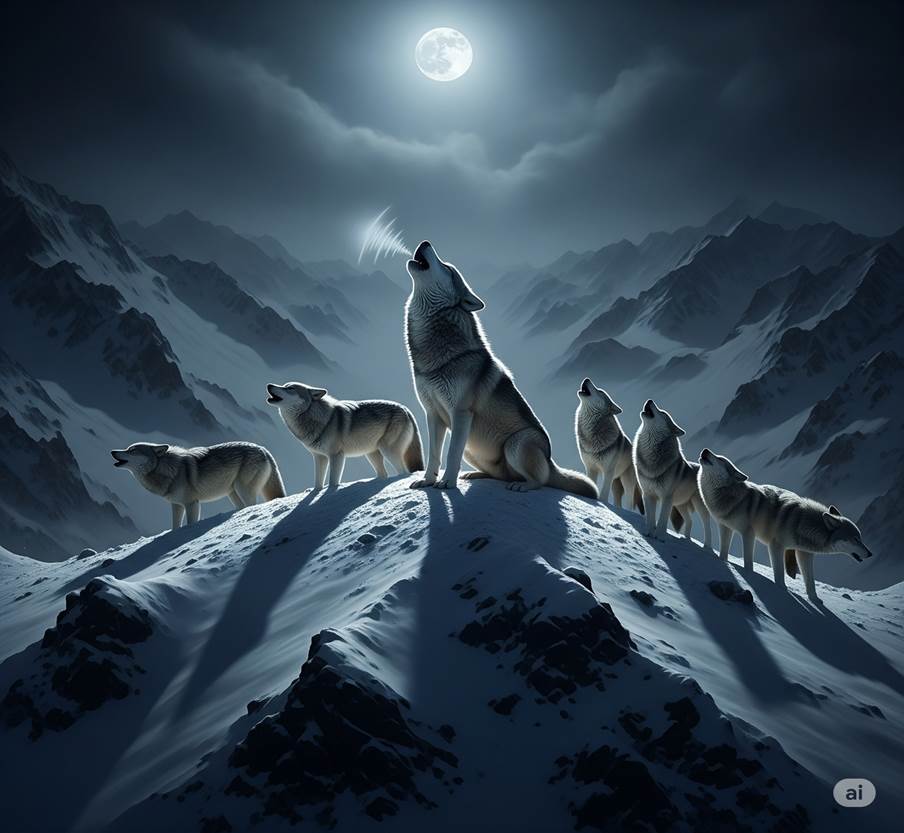
Wolves howl for many reasons: to locate each other, warn intruders, or express unity. But each wolf has a unique howl, almost like a fingerprint, and the harmony created when they howl together can strengthen social bonds and reinforce hierarchy within the pack.
It’s both communication and connection — the music of the wild.
🌍 Why Animal Communication Matters
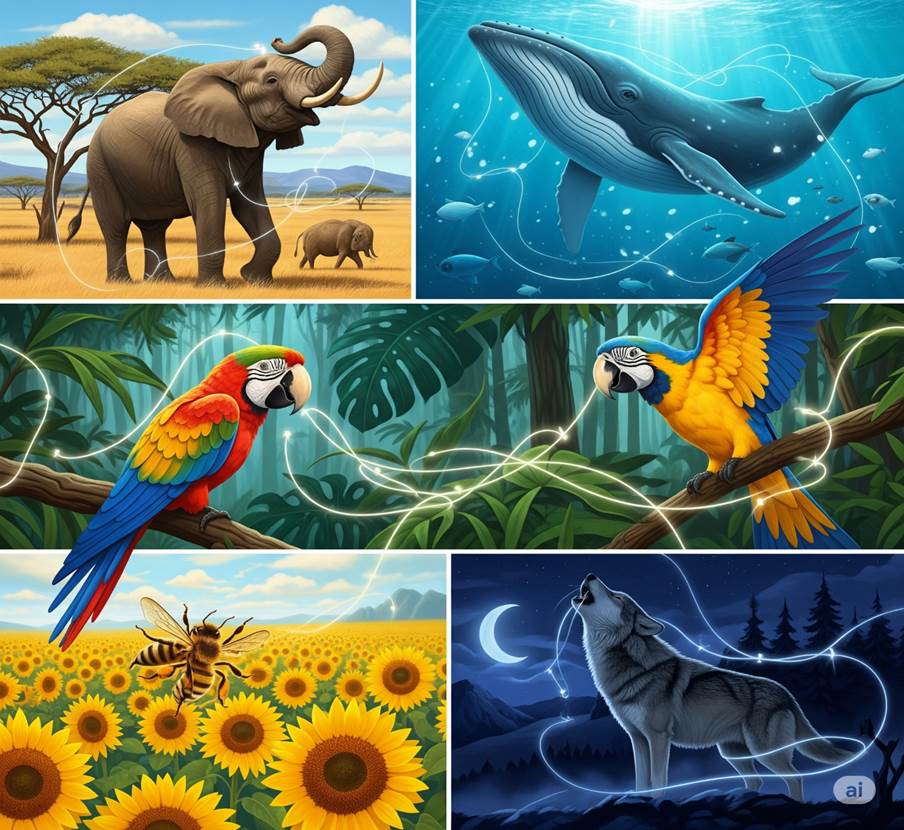
Understanding animal communication helps us appreciate the rich inner worlds of non-human creatures. It also has scientific, ecological, and ethical importance. From decoding dolphin clicks to recognizing stress signals in farm animals, this knowledge can guide
conservation efforts and improve animal welfare.
🧠 Final Thought
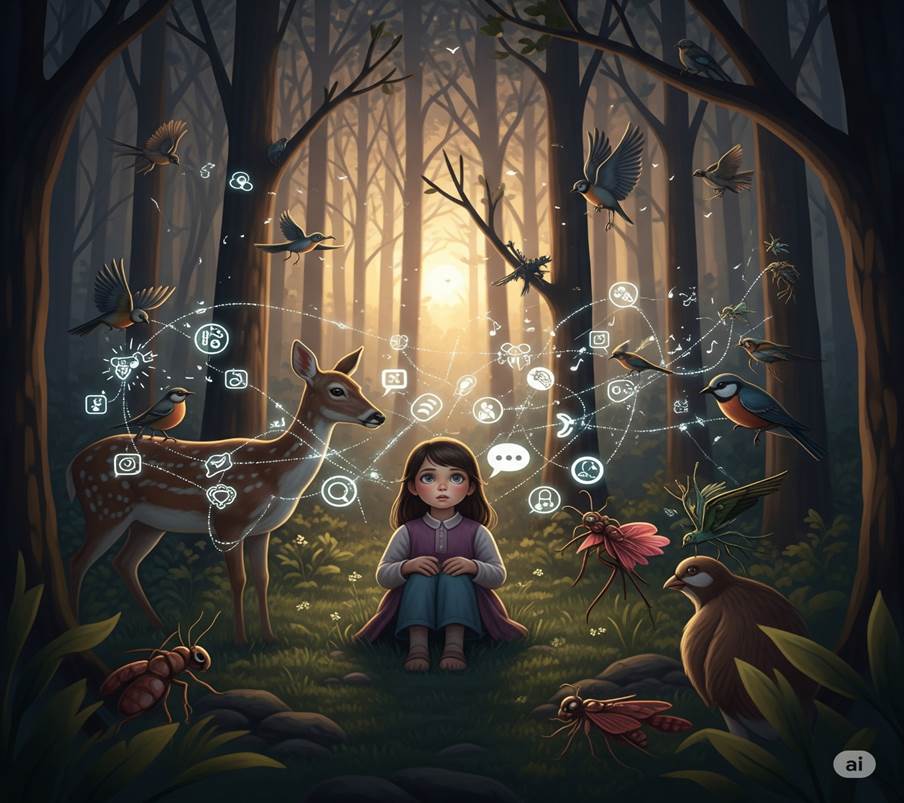
Animals may not speak our language,
but they’re constantly talking — through sound, scent, movement, and touch. If we learn to listen, we’ll realize that the Earth is full of voices we’ve never truly heard.
Next time you see a dog wagging its tail or a bird chirping on a wire — remember, that’s not noise. That’s conversation.
